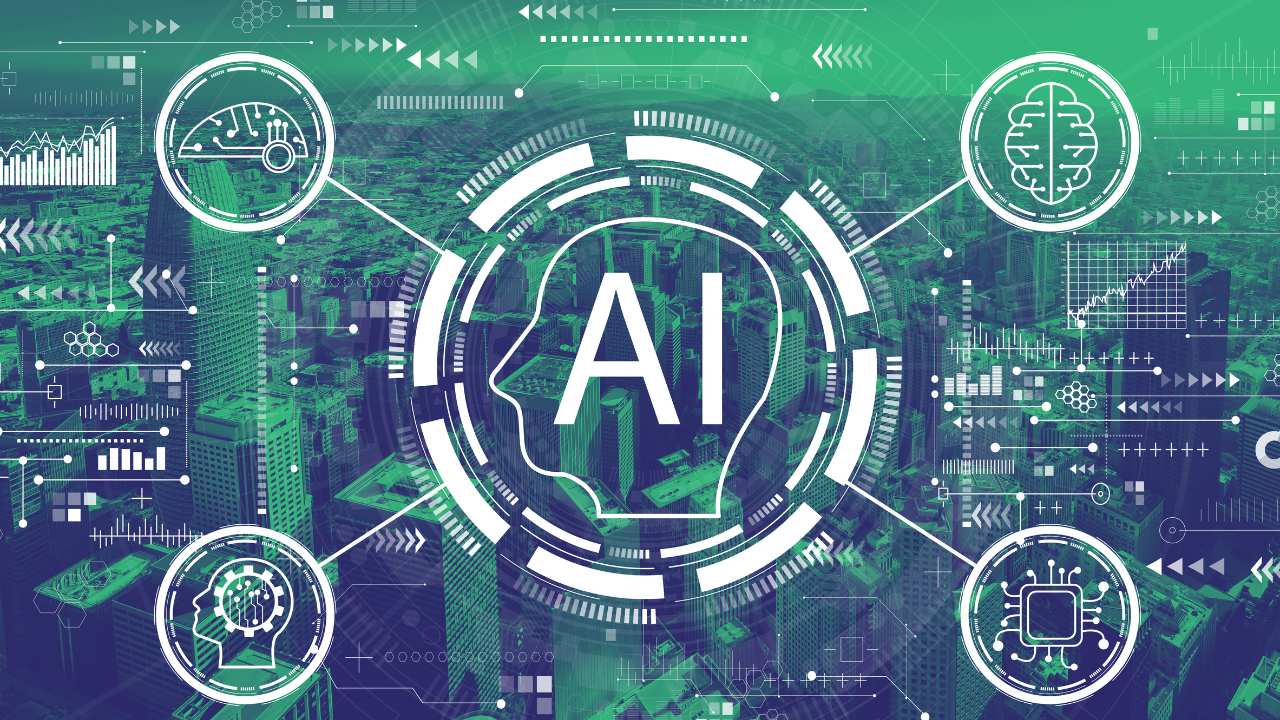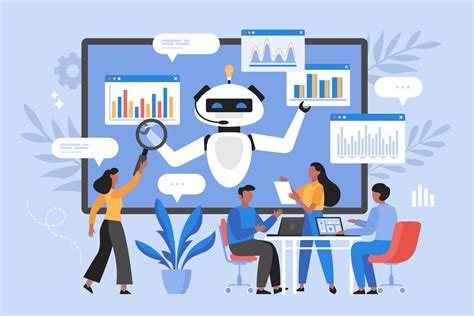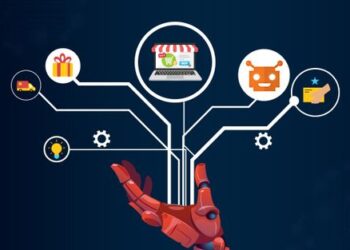In today’s fast-paced digital economy, organizations across industries are leveraging artificial intelligence (AI) tools to gain a competitive edge, streamline operations, and unlock new revenue streams. From predictive analytics to intelligent automation, AI technologies have evolved from niche experiments into core components of modern business strategies. This article delves into how AI tools are reshaping business functions—ranging from marketing and sales to supply chain management and cybersecurity—and offers best practices for successful implementation.
By understanding the diverse capabilities of AI solutions and adopting a structured approach to integration, enterprises can harness data-driven insights, enhance customer experiences, and future‑proof their operations. Below, we explore key domains where AI is making a significant impact, illustrate real‑world examples, and outline actionable steps for leaders aiming to infuse AI into their strategic roadmap.
A. Analytics and Insights
AI‑driven analytics platforms enable companies to process vast volumes of structured and unstructured data, uncover hidden patterns, and generate actionable intelligence. Traditional business intelligence (BI) tools are augmented by machine learning (ML) models that adapt over time, improving the accuracy of forecasts and recommendations.
Key Capabilities: A. Automated Data Preparation: Tools like DataRobot and Trifacta use AI to clean, normalize, and transform raw data, reducing manual effort and human error.
B. Predictive Modeling: Platforms such as IBM Watson Studio and Azure Machine Learning build and deploy ML models that forecast demand, churn, or equipment failures.
C. Natural Language Querying: Solutions like ThoughtSpot and Google’s BigQuery BI Engine allow business users to ask questions in plain English and receive visualizations instantly.
Case Study: A global retailer implemented an AI‑powered demand‑forecasting solution that integrated point‑of‑sale data with external variables (weather, holidays, social media sentiment). This led to a 15% reduction in stockouts and a 10% decrease in inventory holding costs within six months.
B. Customer Experience and Support
Enhancing customer interactions is a top priority for many organizations. AI chatbots, virtual assistants, and sentiment‑analysis tools provide 24/7 support, personalize engagements, and escalate complex issues to human agents when necessary.
Core Components: A. Conversational AI: Chatbot platforms like Drift, Intercom, and Microsoft’s Power Virtual Agents automate routine inquiries, schedule meetings, and guide users through self‑service portals.
B. Sentiment Analysis: Tools such as Clarabridge and MonkeyLearn analyze customer feedback across channels—emails, social media, surveys—to gauge satisfaction and identify emerging issues.
C. Recommendation Engines: Amazon Personalize and Adobe Target use collaborative filtering and deep learning to deliver tailored product or content suggestions.
Real‑World Example: A telecommunications provider deployed an AI chatbot to handle billing inquiries. The bot resolved 70% of questions without human intervention, leading to a 20% reduction in average handling time and a notable uptick in customer satisfaction scores.
C. Marketing and Sales
AI tools are transforming marketing and sales by enabling hyper‑targeted campaigns, optimizing pricing strategies, and accelerating lead qualification processes.
Essential Features: A. Predictive Lead Scoring: Salesforce Einstein and HubSpot’s predictive lead scoring models prioritize high‑value prospects by analyzing past behavior, firmographics, and engagement signals.
B. Content Generation: AI writing assistants like Jasper, Copy.ai, and OpenAI’s GPT‑based solutions help marketers draft blog posts, ad copy, and social media updates at scale.
C. Dynamic Pricing: Companies use AI platforms such as PROS and DynamicAction to adjust prices in real time based on demand, competitor pricing, and inventory levels.
Impact Story: An e‑commerce brand leveraged dynamic pricing powered by ML to adjust product prices hourly. This approach increased revenue per visitor by 12% and improved margin management during peak shopping periods.
D. Human Resources and Talent Management
Recruiting, onboarding, and employee engagement are critical HR functions where AI offers efficiency gains and deeper insights into workforce dynamics.
Key Applications: A. Resume Screening: Tools like HireVue and Pymetrics utilize natural language processing (NLP) and behavioral assessments to filter candidates objectively.
B. Employee Sentiment Monitoring: Platforms such as Peakon and Culture Amp analyze internal communications and survey data to detect morale trends and potential turnover risks.
C. Learning & Development: AI‑powered learning management systems (LMS) like Degreed and Coursera for Business personalize training pathways based on individual skills and performance metrics.
Example: A multinational corporation implemented an AI‑driven resume screening tool that reduced initial candidate review time by 60%, while also increasing diversity in interview pools by minimizing unconscious bias.
E. Operations and Supply Chain
AI enhances operational efficiency by optimizing workflows, forecasting demand, and managing logistics with greater precision.
Primary Solutions: A. Demand Forecasting: Blue Yonder (formerly JDA) and Llamasoft apply ML to predict product demand, improving production planning and reducing stockouts.
B. Robotic Process Automation (RPA): UiPath and Automation Anywhere automate repetitive tasks—invoice processing, order entry, inventory reconciliation—freeing staff for strategic work.
C. Route Optimization: AI‑based logistics platforms like FourKites and Descartes optimize delivery routes in real time, considering traffic, weather, and vehicle capacity.
Operational Benefit: A food distribution company integrated AI‑based route planning and achieved a 25% reduction in fuel costs, while also improving on‑time delivery rates by 18%.
F. Finance and Risk Management
Financial institutions and corporate finance departments are adopting AI for fraud detection, credit scoring, and automated reporting.
Notable Features: A. Fraud Detection: Solutions such as FICO Falcon Fraud Manager and Darktrace use anomaly detection and unsupervised learning to identify suspicious transactions.
B. Automated Financial Reporting: Platforms like BlackLine and Trintech streamline reconciliation and closing processes, using AI to flag discrepancies and propose adjustments.
C. Credit Risk Modeling: Zest AI and Upstart employ ML algorithms to enhance underwriting decisions, expanding credit access while controlling default rates.
Case in Point: A regional bank deployed an AI‑driven fraud detection system that decreased false positives by 40%, enabling investigators to focus on genuine threats and saving millions in prevented fraud losses.
G. Product Development and Innovation
From ideation to prototyping, AI tools accelerate the product lifecycle by generating insights, simulating designs, and automating testing.
Key Innovations: A. Generative Design: Autodesk’s Fusion 360 and Siemens NX leverage generative algorithms to propose optimized product geometries based on specified constraints (weight, materials, performance).
B. AI‑Driven Testing: Platforms like Test.ai and Applitools use computer vision and ML to automate software testing, identifying UI defects and performance issues.
C. Customer‑Centric Ideation: Qualtrics and SurveyMonkey’s AI modules analyze open‑ended feedback to surface unmet needs and feature requests.
Innovation Outcome: An automotive OEM employed generative design to create a lighter, stronger suspension component, reducing material usage by 30% and improving vehicle handling.
H. Cybersecurity and Compliance

AI is pivotal in defending against increasingly sophisticated cyber threats and ensuring regulatory compliance.
Core Technologies: A. Threat Intelligence: Recorded Future and CrowdStrike Falcon use ML to aggregate and analyze threat feeds, predicting attacker tactics and indicators of compromise.
B. User Behavior Analytics: Exabeam and Securonix detect anomalous user activities by building behavioral baselines and triggering alerts on deviations.
C. Automated Compliance Monitoring: Tools like Vanta and Drata continuously audit cloud configurations and user access to maintain standards such as SOC 2, ISO 27001, and GDPR.
Security Impact: A fintech startup adopted AI‑powered user behavior analytics, which reduced mean time to detection (MTTD) of insider threats from 45 days to under 12 hours.
I. Implementation Best Practices

Successfully integrating AI tools requires more than technology—it demands organizational readiness, data governance, and change management.
Recommended Steps: A. Assess Readiness: Evaluate current data maturity, infrastructure, and talent gaps before selecting AI solutions.
B. Define Clear Use Cases: Prioritize projects with measurable ROI and high feasibility, such as chatbots for customer support or predictive maintenance in manufacturing.
C. Establish Data Governance: Implement policies for data quality, privacy, and security to ensure AI models are trained on reliable information.
D. Iterate Rapidly: Adopt an agile approach—build minimum viable models, gather feedback, and refine continuously.
E. Upskill Workforce: Provide training programs and partner with vendors to develop in‑house AI expertise.
F. Monitor and Evaluate: Track KPIs—accuracy, adoption rate, cost savings—and adjust strategies based on real‑world performance.
J. Future Outlook and Trends
The AI landscape continues to evolve, with emerging technologies poised to further transform business strategies:
A. Edge AI: Deploying ML models on devices (IoT sensors, mobile phones) for real‑time analytics without cloud latency.
B. Explainable AI (XAI): Techniques that make model decisions transparent, boosting trust among stakeholders and meeting regulatory requirements.
C. AI‑Augmented Creativity: Tools that assist in design, music composition, and storytelling, expanding human creative potential.
D. Federated Learning: Collaborative model training across organizations without sharing raw data, preserving privacy.
E. AI Ethics and Governance: Frameworks and standards to ensure responsible AI usage, mitigate bias, and align with societal values.
By staying abreast of these trends and continuously refining their AI strategies, organizations can maintain a sustainable competitive advantage and navigate the complexities of tomorrow’s digital economy.
Conclusion
AI tools have transcended experimental pilots to become integral components of business strategy across functions—analytics, customer experience, marketing, HR, operations, finance, product development, and cybersecurity. By adopting best practices in implementation and remaining vigilant of emerging trends, enterprises can harness AI’s full potential to drive growth, efficiency, and innovation.
The journey toward an AI‑driven organization requires a holistic approach: aligning technology with strategic objectives, fostering a data‑centric culture, and investing in talent. Those that succeed will not only optimize current operations but also uncover new opportunities, reimagine business models, and lead their industries into the next era of intelligent enterprise.












